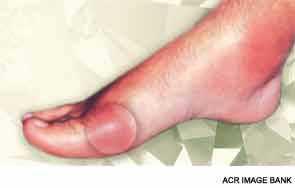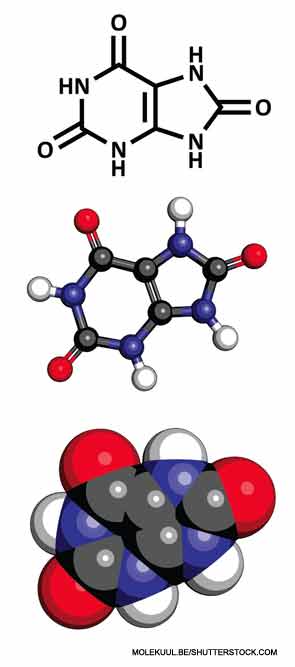
The incidence of gout has been steadily increasing during the past few decades, from about 0.5% of the population in the early 1970s to about 4% as of 2010, making it increasingly important to provide quality care to this patient population. To improve the quality of gout care, both physicians and patients need to understand the goals and effects of gout therapy, said Michael H. Pillinger, MD, associate professor of medicine and biochemistry and molecular pharmacology, NYU School of Medicine, New York, at the ACR’s Winter Rheumatology Symposium this January in Snowmass, Colo. During the session, Update on Gout Therapy: The ACR 2012 Treatment Guidelines and Beyond, Dr. Pillinger discussed current treatment options and the recently published ACR guidelines.
Quality of Care
Overall, the quality of gout care today is poor, Dr. Pillinger said. “A very big underlying reason [for this] is a lack of understanding on the [part] of both patients and physicians about the nature of the disease. Managing attacks is the tip of the iceberg,” he explained. Although the pain from a gout attack can be treated with nonsteroidal antiinflammatory drugs (NSAIDs), failing to manage gout effectively tends to make the gout worse over time and increases the frequency of attacks.
Another complication is that the consequence of treating gout properly is that it will actually make the patient worse for a period of time, Dr. Pillinger said. If the patient is not treated with antiinflammatory medication in addition to urate-lowering therapy during the “vulnerable window,” which can last 6–24 months or longer, the patient is likely to blame the gout medication for increased attacks and stop taking it.
It’s also important to “treat to target,” Dr. Pillinger said. It’s not enough to put the patient on urate-lowering therapy; follow-up is needed to ensure the patient is progressing toward an appropriate urate level. The keys to quality treatment are “understanding and knowing the nature of the targets, and recognizing that gout is a long-term disease not a short-term disease,” Dr. Pillinger said. “One of the main goals of the ACR treatment guidelines is to lay this out for practitioners, and they’re valuable in that regard.”

ACR Gout Treatment Guidelines
The 2012 American College of Rheumatology Guidelines for Management of Gout were published after a process of literature review and appraisal. During the review process, core expert panels (CEPs) and task force panels (TFPs) convened to investigate four areas of interest: therapy of acute gouty arthritis, urate lowering, antiinflammatory prophylaxis and management of chronic tophaceous gouty arthropathy. To determine whether each recommendation would be included in the guidelines, the panel members assigned ratings independently, then shared the ratings, discussed and voted. Recommendations that are included in the guidelines also include quality ratings to indicate the level of evidence that supports the practice.

